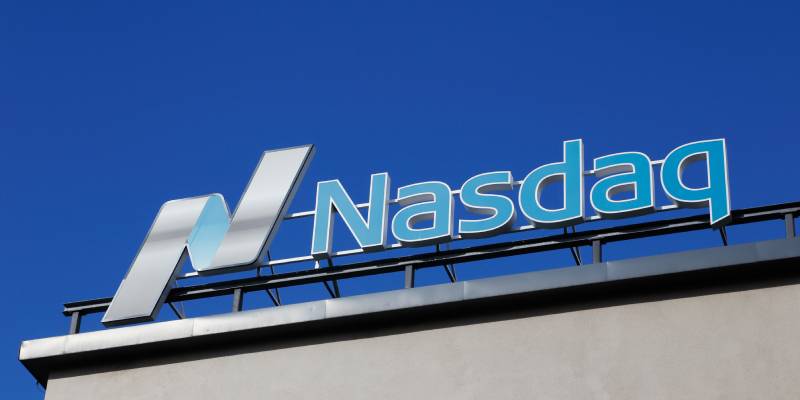Imagine your innovative tech startup growing and finally reaching the point where it goes public on Nasdaq. This journey is transformative, involving vital financial choices and strict adherence to market rules. A Nasdaq listing is more than capital; it stands for your market status and investors’ trust. Here in this Nasdaq compliance guide. we will shed light on the steps and strategic decisions leading to a successful initial public offering (IPO). Let us dive into the process that many startups dream of completing.
Understanding NASDAQ Market Tiers for IPOs
The path from a startup’s birth to its Nasdaq listing is pivotal. Nasdaq has three market levels: Global Select Market, Global Market, and Capital Market, each with rules that increase strictness.
The top level, Global Select Market, has the most demanding listing standards. Startups must choose the level that matches their market image and growth goals. For smaller companies, the Capital Market lets startups access public funds without meeting the high demands of the other levels.
Choosing the right level for your IPO is a significant strategic move. It should reflect your financial state and plans. Next, we will see what it takes to be part of the prestigious Global Select Market, offering insights for startups aiming high.
Overview of NASDAQ Global Select Market Standards
The Global Select Market is the peak of prestige for listed companies. It offers greater visibility and trust among investors.
To meet its high standards, startups need
- We have a broad, active shareholder base, with 550 total holders and an average monthly trade of 1.1 million shares over 12 months, or at least 2,200 total holders.
- A substantial market value, with at least 1.25 million unrestricted shares and either a market value of $110 million or $100 million if the company has equity of $110 million.
These rules show the importance of a broad shareholder base and a substantial market value. They reflect a company’s financial health and growth potential.
Ownership and Market Value Criteria for NASDAQ Listing
Startups must have strong ownership and market value to list on the Global Select Market. You will need at least 550 holders and an average monthly trade of 1.1 million shares over 12 months, or 2,200 holders. Plus, depending on the standard, at least three or four active market makers.
It would help if you also had a substantial market value with at least 1.25 million unrestricted shares. These shares should have a market value of $110 million, or $100 million, with equity of $110 million. For IPOs, the value must be at least $45 million.
These criteria show Nasdaq’s focus on financial stability and investor trust.
Financial Benchmarks for the NASDAQ Global Select Market
The financial benchmarks for listing on the Global Select Market include
- Strong financial performance, with at least $11 million pre-tax income over three years and no less than $2.2 million in the last two years.
- A market capitalization of at least $160 million.
- Total assets of $80 million from the last year.
- Equity of at least $55 million.
Meeting these metrics shows your economic status and potential for stability and profit, attracting investors.
Essentials of NASDAQ Global Market Listing
The Global Market is for companies aiming for growth, with standards that show financial strength and market presence. It helps companies mature and move up to higher tiers.
The market adjusts for various development stages and provides a supportive growth framework. For startups, this tier is a chance to showcase potential to investors.
Bid Price and Shareholder Standards for NASDAQ
The Global Market has a minimum bid price of $4 per share, setting a base stock value. There are a minimum of 400 shareholders with at least 100 shares each, ensuring a diverse and stable base.
A diverse base shows continued investor trust. These standards are critical to a fair market for the company and its investors.
Equity and Market Value Standards for the NASDAQ Global Market
To list in the global market, startups need shareholders’ equity of at least $15 million and unrestricted shares worth $8 million, with at least three active market makers. Or a market value of $75 million and unrestricted shares worth $20 million with four market makers.
These rules show financial strength and the ability to keep investor interest.
Entry Point to NASDAQ Capital Market for Startups
The Capital Market is ideal for small companies and offers a growth platform. It has lower standards, helping startups grow and gain market visibility.
To join, startups need a certain number of shares and holders. This entry-level helps new companies meet requirements and grow.
Shareholder Requirements for NASDAQ Capital Market Entry
The Capital Market requires 1 million unrestricted shares, creating a lively trade environment. This diversity supports market stability.
Meeting these rules is a step in the listing process. Maintaining good financials is crucial for startup growth.
Equity and Net Income Standards for NASDAQ Listing
Startups need $5 million in equity and $15 million in share market value. Net income should be at least $750,000 in the last year or two of the previous three years.
These financial standards are essential for showing economic health and attracting investors.
Corporate Governance and NASDAQ Compliance Guide
Proper corporate governance and compliance are essential for Nasdaq-listed companies. Nasdaq focuses on independent directors and corporate governance rules to ensure company transparency and investor protection.
Independent directors make objective decisions for the company and its investors. Nasdaq’s governance standards govern strategic direction and management oversight, covering board structure and executive pay.
Startups might find these standards challenging, but they build investor trust and contribute to public market success.
Roles of Audit and Compensation Committees in NASDAQ
The audit committee oversees financial reporting, with independent members reviewing statements. One member needs financial expertise.
The compensation committee aligns executive pay with company goals. It must balance competitive pay with shareholder and regulatory standards.
These committees promote company transparency and trust, which is crucial for public listing.

Code of Conduct and NASDAQ Shareholder Meetings
Nasdaq’s code of conduct and shareholder meetings encourage ethical behavior and investor involvement in company decisions.
The code guides company behavior and improves reputation among investors and the public. Shareholder meetings, facilitated by proxy solicitation, allow investor decision-making.
These governance aspects are essential for startups during the IPO journey and listing application process.
IPO Steps From Application to NASDAQ Listing
The IPO process is a crucial stage for startups. It demands careful preparation, especially for a Nasdaq listing.
The application must be clear and complete. Any errors can lead to delays or rejection. Startups must compile the necessary documents and ensure transparency.
Preparing Your NASDAQ Listing Application
Startups must disclose their legal history and financial health in their application. This honesty builds investor trust.
The application is a commitment to uphold Nasdaq’s rules. This commitment is formalized in the listing agreement, preparing companies for Nasdaq standards.
Read More : Effortless Guide to Nasdaq IPO Preparation
Understanding the NASDAQ Listing Agreement
The Nasdaq Listing Agreement is vital. It outlines the company’s commitment to Nasdaq standards and market integrity.
Harvesting Growth: The Impact of a Nasdaq Listing for Emerging Tech Companies
Securing a Nasdaq listing is a massive achievement for a startup. It reflects your financial skill and growth potential and earns more investor trust.
The journey does not end with the IPO. Maintaining Nasdaq’s standards is crucial. For more insights on a Nasdaq launch, connect with us. Your IPO dream is within reach, and the path to Nasdaq is clear and strategic. Let us walk this path together.
Trade finance advice provides insights into trade finance organizations. Visit to learn more about trade finance advisory.



